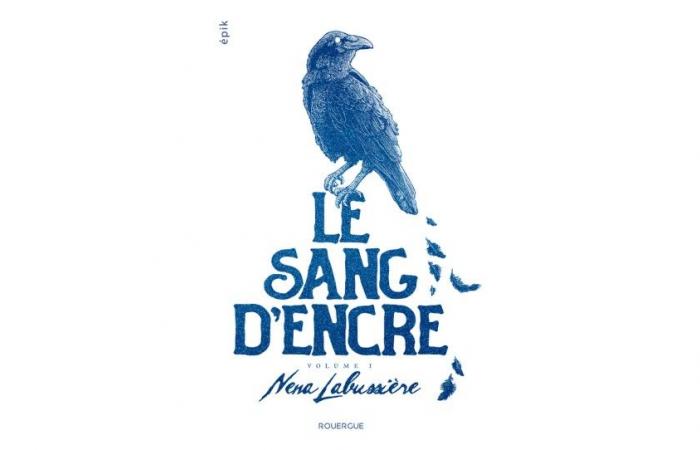I discovered with great interest the first volume of a diptych entitled “ The Blood of Ink » (Editions du Rouergue) by a young author, Nena Labussière, for whom this is her first novel. And rarely has a novel lived up to its title better! In fact, the city of Kaalun is ravaged by a formidable disease, which strikes both poor and rich at random (even the crown prince of the Lands-Mêlées is affected): from the king to the lowest of his subjects, all are affected, according to the consecrated expression, an inky blood as for the extension of this evil which, precisely, presents as a symptom the transformation of the blood into a blue blood, literally an inky blood therefore, which flows from the crevices, cracks and scales which little by little covers the body and opens painfully at the slightest movement. To care for his eldest son, the king will call on Olga, a mute and solitary young girl, of unknown origins because she was found as a baby, who has an unrivaled gift for healing the poor around her. Her integration into the staff of the Château des Chimères and her creation of a dispensary, the links that will be established between her and her royal patient, will upset the fragile political balances, interpersonal tensions and various internal plots.
Indeed, we are in a world where magical gifts sometimes surface in individuals, where fairies and their descendants have disappeared but their memory remains alive, where hatred between rival families is more than alive and where underground struggles to recover lost power are just as lost. Nena Labussière excels in the painting of characters – whether it is Olga, the Seneschal and his wife, the formidable soldier Petra, the king’s sister, Devlin the king’s youngest son, or the legate Timoteus Lettfeti, among others – to the often tormented psychology whose evolution we follow throughout the novel. The plot is gripping as can be, and the insertion, at more or less regular intervals, of the cantos of “The legend of the fatas and the little fays”, is an excellent writing device which allows us to better understand the complex politics and the action in progress by making the connections ourselves. Furthermore we feel a strong sympathy for Olga and her assistant Follet, who will learn to no longer rely only on themselves but to trust others – a message which seems to me to be repeated often in novels in these times of frenzied individualism and selfishness – and discovering that appearances are often deceptive.
It was difficult for me to put the novel down once I started, especially since the structure of the novel, short chapters each featuring a character, makes reading it totally addictive. An author and a novel to discover!






